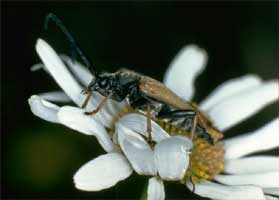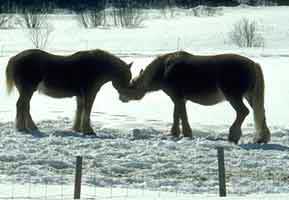Most animals (including people) use “body language” as well as sound and smell in order to communicate with one another. Here are some of the ways animals express themselves.
Many animals communicate by smell: they release pheromones (airborne chemicals) to send messages to others. Pheromones play an important part in reproduction and other social behavior. They are used by many animals,including insects, wolves, deer, and even humans!
Bees dance when they have found nectar. The scout bee will dance in the hive, and the dance directs other bees to the location of the nectar.
 IMSI Master Clips |
Chimpanzees greet each other by touching hands.
Male fiddler crabs wave their giant claw to attract female fiddler crabs.
White-tailed deer show alarm by flicking up their tails.
Dogs stretch their front legs out in front of them and lower their bodies when they want to play.
Elephants show affection by entwining their trunks.
Giraffes press their necks together when they are attracted to each other.
Gorillas stick out their tongues to show anger.
 arttoday.com |
Horses rub noses as a sign of affection.
 arttoday.com |
Kangaroos thump their hind legs to warn others of danger.
Prairie dogs bare their teeth and press their mouths together to discover if they are friends or foes.
Whales breach (leap out of the water) repeatedly to send messages to other whales.
Swans entwine their long necks both to fight and to court.






